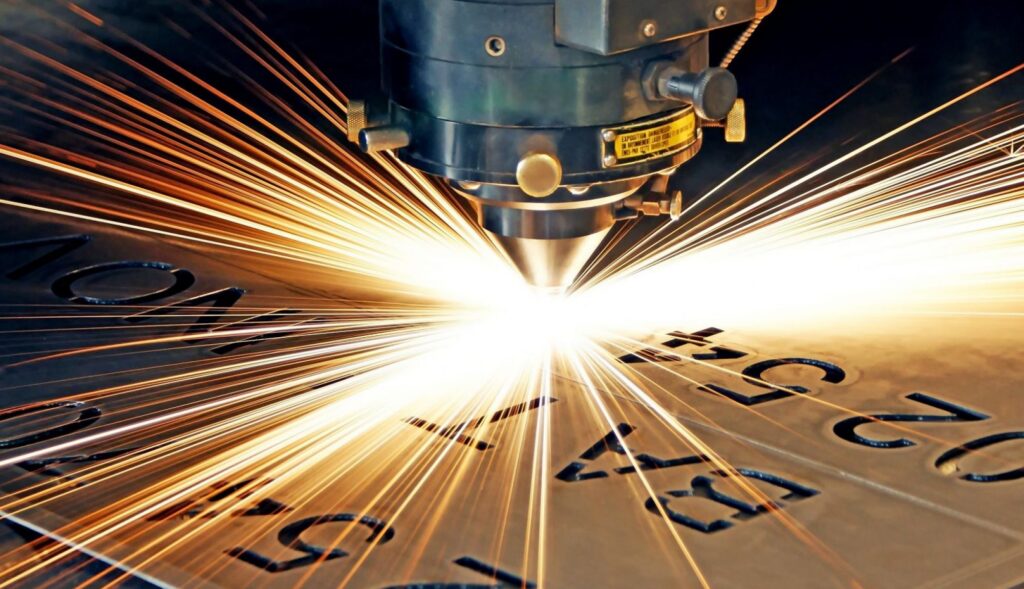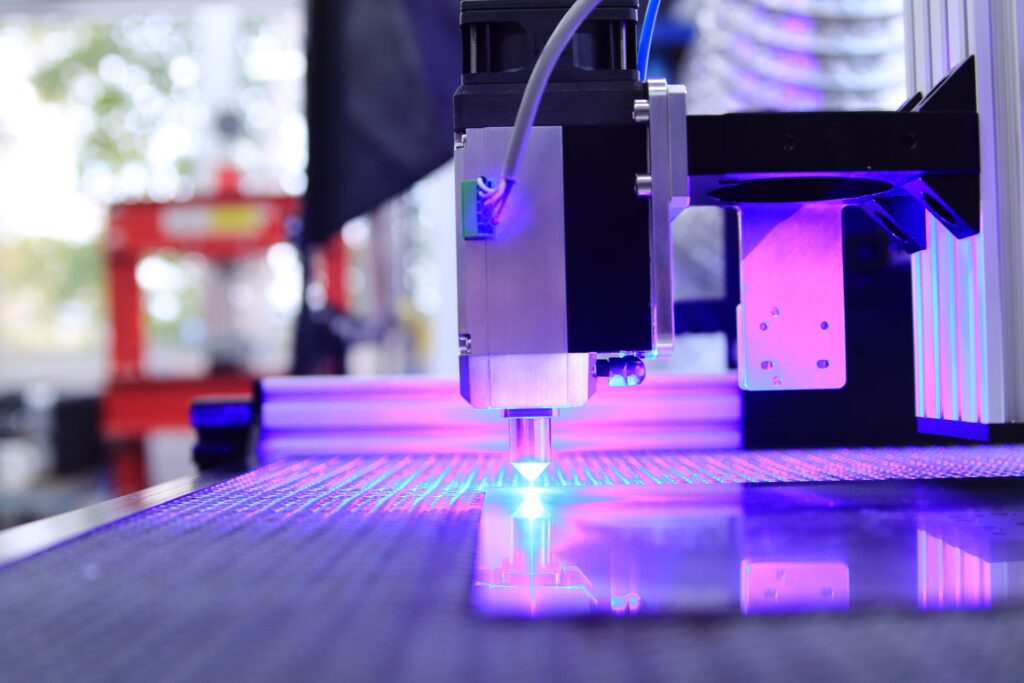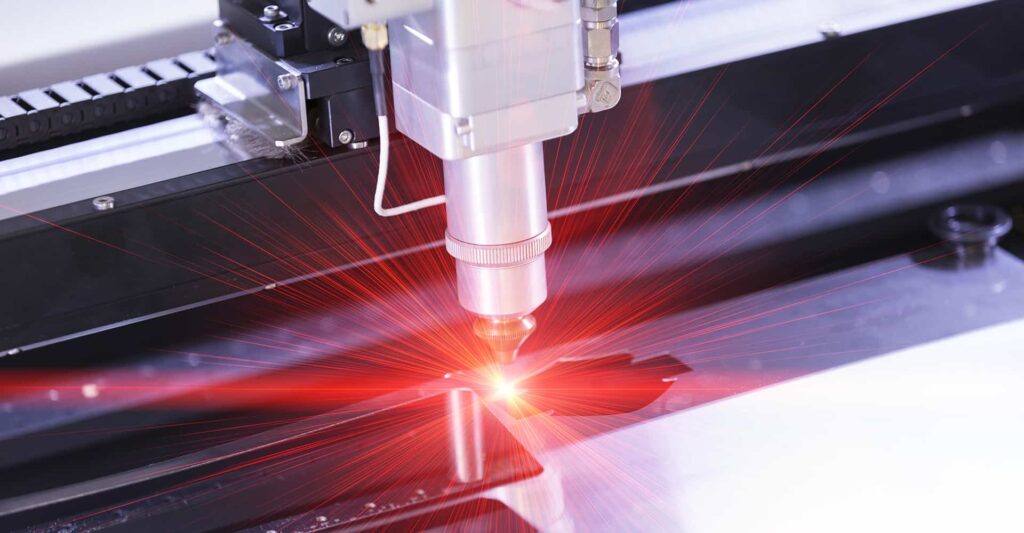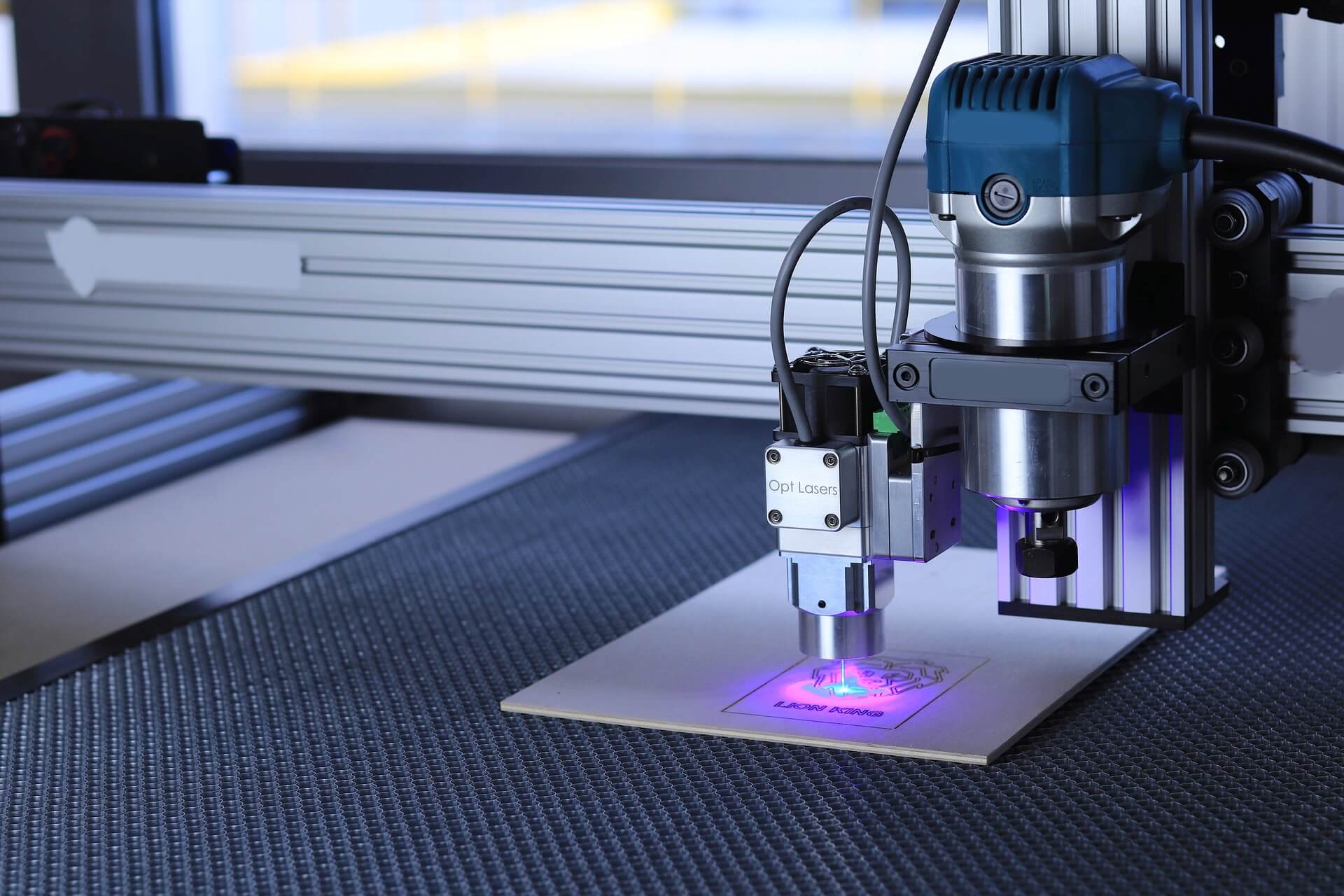Introduction to the basics of laser engraving machine
Laser engraving machine is the most popular laser marking technology for product identification and traceability. It involves using a laser marking machine to permanently mark different materials. Laser engraving machine technology has high precision. Therefore, it is the preferred choice for marking parts and products in many industries, especially the automotive and aviation industries.
This article introduces all the information you need to know about this technology before incorporating it into your project.
1.What is a laser engraving machine?
This process involves using a laser marking machine (which we call a laser engraving machine) to evaporate specific areas on almost any material. Therefore, the permanent markings formed by it have a higher contrast than the unmarked areas on the parts or products.
This process is suitable for marking logos, barcodes, serial numbers, and QR codes on parts. This process, together with laser etching, annealing, ablation, and other laser marking techniques, forms a highly reliable process in terms of traceability, identification, and product decoration.

2.How does a laser engraving machine work?
Laser engraving machines involve focusing a laser beam at an appropriate power level from a distance onto a part. This will cause the material to evaporate, leaving permanent marks on the parts. Adjusting power is important because too little is ineffective, and too much can burn materials.
The process of laser engraving machine is very simple. The following are the steps required for laser engraving machine parts:
1) Intention
Concept is an idea about the appearance of the mark and the materials suitable for the job. It requires a high degree of creativity. Therefore, it is the most important step in the laser engraving process, as it determines the quality and efficiency of the marking.
The concept is also very important because the marking of the laser engraving machine is permanent. Therefore, it is not easy to change incorrect tags after completing the tagging process.
2) Design Marking Images
Design images to be marked on computer programs. You can use Adobe Illustrator, Inkscape, Lightburn, DraftSight, and Onshape to create graphic designs. In addition, you need to ensure that the machine is compatible with the design files.
3) Select materials
Choose materials that are compatible with laser engraving machines and complement your design. Usually, laser engraving machines are suitable for materials such as stone, glass, plastic, and metal. However, each type is suitable for secluded material lists. For example, ultraviolet laser marking machines are suitable for plastics because they do not generate high heat (they are cold lasers), while CO2 laser marking machines are suitable for organic materials.
4) Set up the local device
The setting and type of carving machine separate their processes from each other. Set laser intensity, cutting depth, speed, number of passes, and line thickness, and test similar test materials to see their effectiveness. Store the best settings that reflect the content you need
5) Laser engraving machine parts
Put the materials into the machine and mark them. You can remove materials from the machine and clean them during marking.

3.Materials used for laser engraving machine technology
Laser engraving machine technology is compatible with many materials. Here are some methods you can consider for your project.
1) Plastic
Acrylic and POM plastics are common materials for laser engraving machines. However, the power of the laser must be adequately adjusted and customized based on the material absorption spectrum and other existing additives. Plastic is more compatible with CO2 and UV laser marking machines.
2) Hardware
Metal is the most common material used in laser engraving machines, hence it is known as the “heart of many industries”. Examples of metals compatible with this process include stainless steel, gold, silver, iron, and aluminum. Fiber engraving machine is the most suitable marking machine for metals.
3) The forest
Wood is also compatible with this process. Due to high temperatures, many people believe that they pose a fire hazard. However, you can adjust the power of the laser marking machine to carve wood without catching fire. Plywood, medium density fiberboard, and cardboard are popular wooden materials that can be machine carved.
4) Coated metal
This process is also applicable to coated metals and is suitable for the evaporation of metal coatings. This resulted in clean removal of the coating.

4.Advantages and disadvantages of laser engraving machine
Laser engraving machines are highly recognized in the industry for their advantages such as fast production speed, high precision, and ability to process various materials. However, this process also has its drawbacks. Here are some advantages and disadvantages that you should pay attention to.
1) Its advantages
- Rapid production process
This is a fast process that may take 3 to 5 minutes, depending on the material, design, and laser power. Due to its fast speed, this process is very important in rapid manufacturing. - Wide range of materials
It is compatible with many materials such as metal, wood, and plastic, which is different from marking systems such as dot spraying and chemical etching. This gives customers greater freedom in choosing materials and designs. - Accuracy
Laser marking machines have high precision and accuracy, capable of engraving at+/-0.01 inches, but the specific accuracy depends on the type of machine and its components. Due to its high precision, it is suitable for the jewelry, medical, and electronics industries. - Repeatability
Laser marking machines are suitable for batch marking processes due to their repeatability. The software storage design of this machine allows for marking and adding the same markings on different or identical parts. Repeatability ensures faster turnaround time and aesthetically pleasing products for you. - Durability of Trademark
The marking of laser engraving machines has high contrast, which helps with visibility and is permanent. Therefore, they are durable under different environmental conditions, whether it is wear, high temperature, or chemicals. This is different from the marking process, such as inkjet marking, where the chemicals responsible for marking may wash away in unfavorable environments. Due to durability, laser engraving machine markings are suitable for product identification and traceability. - Environmentally friendly production process
It does not require consumables such as chemicals that may pollute the environment, such as inkjet markings. Moreover, unlike point peening machines, they do not produce any noise. Therefore, this process is environmentally friendly, clean, and energy-efficient. - Non contact marking
As a non-contact marking process, it will not cause material contamination and will not deform the physical and mechanical properties of the parts. This is different from dot and inkjet marking, where chemicals may be incompatible with the material.
2) Its shortcomings
- Demand for professional knowledge
The use of laser engraving machines requires professional operators to fully unleash the potential of the machine and provide high-quality markings. The high demand for professional knowledge has increased operating costs. In addition, professional knowledge determines the quality of labeling. - High operating and maintenance costs
Compared with other marking system machines, engraving machines are expensive. Their maintenance and operation costs are also high. Therefore, this indicates that using one will require initial and subsequent investments. Due to high operating and maintenance costs, it is recommended to outsource to laser engraving machine services. - Dangerous smoke
The machine will release hazardous gases and smoke during the marking process. Therefore, you need a good ventilation and protection system to ensure a safe working environment.
4.Conclusion
Laser engraving machine is a non-contact process that can produce precise, permanent, and high-quality marks. Therefore, it is an important process for product identification and traceability in multiple industries.
